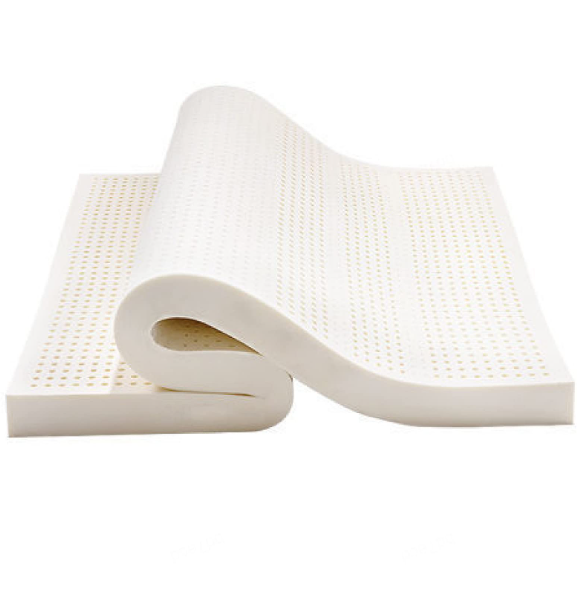Versatility of 3cm Latex Sheets: 2024 Comprehensive Guide
Latex sheets have long been valued for their versatility and numerous applications across various industries. Whether it’s for bedding, medical purposes, or crafting projects, latex sheets offer a unique combination of elasticity, durability, and comfort. In this blog, we’ll delve into the specifics of 3cm latex sheets, provided by Jiangsu Hengyuan Householding Co., Ltd., exploring their dimensions, properties, and diverse range of applications.
Dimensions and Specifications
When it comes to 3cm latex sheets, the thickness is a defining feature. At 3cm, these sheets strike a balance between support and comfort, making them ideal for a variety of purposes. Typically available in various widths and lengths, these sheets can be customized to suit specific requirements. The weight per unit area and density of the sheets ensure durability and longevity, making them a reliable choice for both commercial and residential use.
Properties
A. Elasticity and Flexibility
One of the key characteristics of latex sheets is their exceptional elasticity and flexibility. The 3cm thickness provides ample support while allowing for contouring to the body’s shape, promoting a comfortable sleeping or resting experience.
B. Durability
Thanks to their inherent resilience, 3cm latex sheets are highly durable and long-lasting. They can withstand regular use without losing their shape or structural integrity, making them a cost-effective investment for consumers and businesses alike.
C. Resistance to Moisture
Latex is naturally resistant to moisture, making 3cm latex sheets an excellent choice for environments where moisture control is essential. This property helps prevent the buildup of mold, mildew, and bacteria, ensuring a hygienic sleeping or resting surface.
D. Heat Retention
While latex sheets offer excellent insulation properties, they also allow for adequate airflow, helping regulate body temperature during sleep. The 3cm thickness strikes a balance between heat retention and breathability, ensuring a comfortable sleeping environment year-round.

E. Breathability
Despite their thickness, 3cm latex sheets remain breathable, allowing air to circulate freely and wick away moisture. This breathability contributes to a cooler and more comfortable sleeping experience, especially in warmer climates.
Applications
A. Bedding and Mattresses
3cm latex sheets are commonly used in the manufacturing of mattresses and bedding products. Their combination of support and comfort makes them an ideal choice for those seeking a restful night’s sleep.
B. Cushioning and Padding
In addition to mattresses, 3cm latex sheets are used as cushioning and padding in furniture, including sofas, chairs, and ottomans. Their resilience and durability make them well-suited for providing support and comfort in seating applications.
C. Medical Uses
The unique properties of latex sheets make them suitable for various medical applications, including orthopedic supports and wheelchair cushions. The 3cm thickness provides adequate support for patients while promoting proper alignment and pressure distribution.
D. Crafts and DIY Projects
Crafters and DIY enthusiasts often use 3cm latex sheets for a wide range of projects, including costume making, cosplay, and prop building. Their versatility and ease of manipulation make them a popular choice for creating custom shapes and designs.
E. Soundproofing
Due to their density and acoustic properties, 3cm latex sheets are also used for soundproofing purposes. Whether it’s in recording studios, home theaters, or noisy environments, these sheets help absorb sound and reduce noise transmission.
Manufacturing Process
A. Harvesting and Processing of Latex
The journey of a 3cm latex sheet begins with the harvesting of latex, a milky fluid extracted from rubber trees. This process involves carefully tapping the trees to collect the latex without damaging them. Once collected, the latex undergoes a series of processing steps to remove impurities and improve its quality. This may include centrifugation, filtration, and the addition of stabilizers to ensure consistency.
B. Sheet Formation
After processing, the latex is poured into molds or spread onto flat surfaces to form sheets of the desired thickness, such as 3cm. The sheets are then subjected to heat and pressure to vulcanize the latex, transforming it into a durable and resilient material. During this process, additives may be incorporated to enhance specific properties, such as elasticity or flame resistance.
C. Quality Control Measures
Throughout the manufacturing process, stringent quality control measures are implemented to ensure that each 3cm latex sheet meets the highest standards of quality and consistency. This includes testing for thickness, density, elasticity, and other mechanical properties. Any sheets that do not meet the specified criteria are rejected or reprocessed to maintain product integrity.
Environmental Impact
A. Sustainability of Latex Production
The sustainability of latex production is a key consideration for environmentally-conscious consumers and manufacturers. Rubber trees are typically grown in tropical regions, where they play a vital role in providing habitat and mitigating climate change. Responsible harvesting practices, such as tapping trees in rotation and replanting to maintain forest cover, help ensure the long-term viability of latex production while preserving biodiversity.
B. Biodegradability
One of the notable environmental benefits of latex is its biodegradability. Unlike synthetic materials, latex decomposes naturally over time, reducing the environmental impact of disposal. This makes 3cm latex sheets a more eco-friendly option compared to non-biodegradable alternatives, contributing to a circular economy and reducing waste.
C. Recycling Options
While latex is biodegradable, efforts are also underway to explore recycling options for end-of-life latex products. Recycling initiatives aim to reclaim and repurpose latex materials, such as mattresses or cushions, into new products or materials. By extending the lifecycle of latex products through recycling, manufacturers can further reduce their environmental footprint and promote a more sustainable future.
Market Analysis
A. Demand for Latex Sheets
The demand for latex sheets, including 3cm variants, remains strong across various industries, driven by their unique properties and versatility. In the bedding sector, consumers seek latex mattresses and pillows for their comfort and durability. Similarly, industries such as healthcare, automotive, and construction rely on latex sheets for cushioning, insulation, and soundproofing applications.
B. Competitors and Market Trends
While latex sheets face competition from synthetic materials such as memory foam or polyurethane, they continue to maintain a significant market share due to their superior performance and environmental benefits. Recent market trends indicate a growing preference for sustainable and eco-friendly products, which bodes well for the future of latex sheets.
C. Pricing Strategies
Pricing strategies for 3cm latex sheets are influenced by various factors, including raw material costs, manufacturing processes, and market demand. Manufacturers like Jiangsu Hengyuan Householding Co., Ltd. strive to offer competitive pricing while maintaining product quality and sustainability standards. Additionally, value-added services such as customization and bulk discounts may be available to meet the diverse needs of customers.
Conclusion
In conclusion, 3cm latex sheets offer a multitude of benefits and applications across various industries. From bedding and medical uses to crafting projects and soundproofing solutions, these versatile sheets provide exceptional durability, comfort, and performance. With Jiangsu Hengyuan Householding Co., Ltd. as a trusted supplier, consumers can trust in the quality and reliability of their 3cm latex sheets for their diverse needs.

